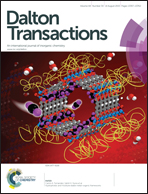Phase transition characteristics and associated piezoelectricity of potassium-sodium niobate lead-free ceramics
Abstract
To achieve high piezoelectric activity and a wide sintering temperature range, the ceramic system concerning (1 − x)(K0.48Na0.52)(Nb0.96Sb0.04)O3–x[Bi0.5(Na0.7Ag0.3)0.5]0.90 Zn0.10ZrO3 was designed, and the rhombohedral–tetragonal (R–T) phase boundary can drive a high d33. Phase transition characteristics as well as their effects on the electrical properties were investigated systematically. The R–T coexistence phase boundary (0.04 ≤ x ≤ 0.05) can be driven via modification with BNAZZ, and has been confirmed by XRD and temperature-dependent dielectric constants as well as Raman analysis, and the ceramics possess enhanced piezoelectric properties (d33 ∼ 425 pC N−1 and kp ∼ 0.43) and a high unipolar strain (∼0.3%). In addition, a wide sintering temperature range of 1050–1080 °C can warrant a large d33 of 400–430 pC N−1, which can benefit practical applications. As a result, the addition of BNAZZ is an effective method to improve the electrical properties (piezoelectricity and strain) and sintering behavior of potassium-sodium niobate ceramics.


 Please wait while we load your content...
Please wait while we load your content...